Here are some pictures of a double bass (upright bass) with a broken neck. You will see some of the repair process.
1. Getting ready to shave/chisel/scrape the bass neck block.
2. Closeup of the neck block after scraping off the old glue.
3. This is the neck butt/join. Notice the glued-in shim at the heel end.
4. Photo of a visitor, just outside my studio window.
5. Clamping. Yes, anything goes. In addition to clamps, I used rope, padding, shims and wedges – all to get the angle perfect.
6. And here is a close-up of the clamping from the other side. I even used an old rubber glove to prevent slip.
All of this needs a dry run before the actual gluing process.
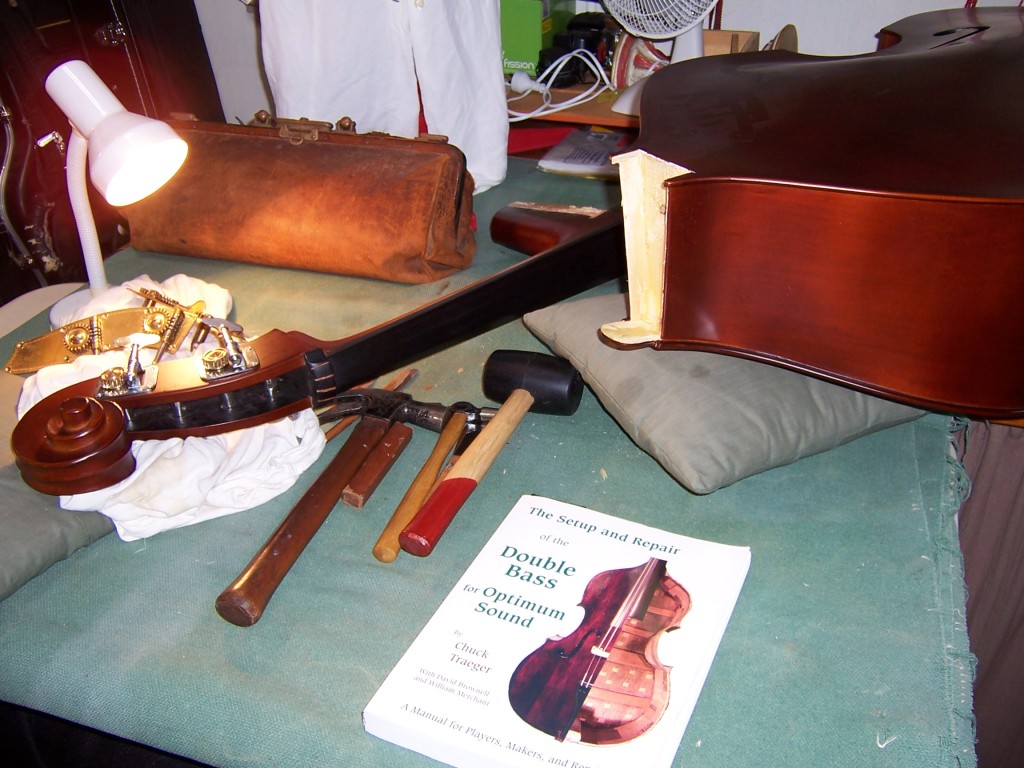
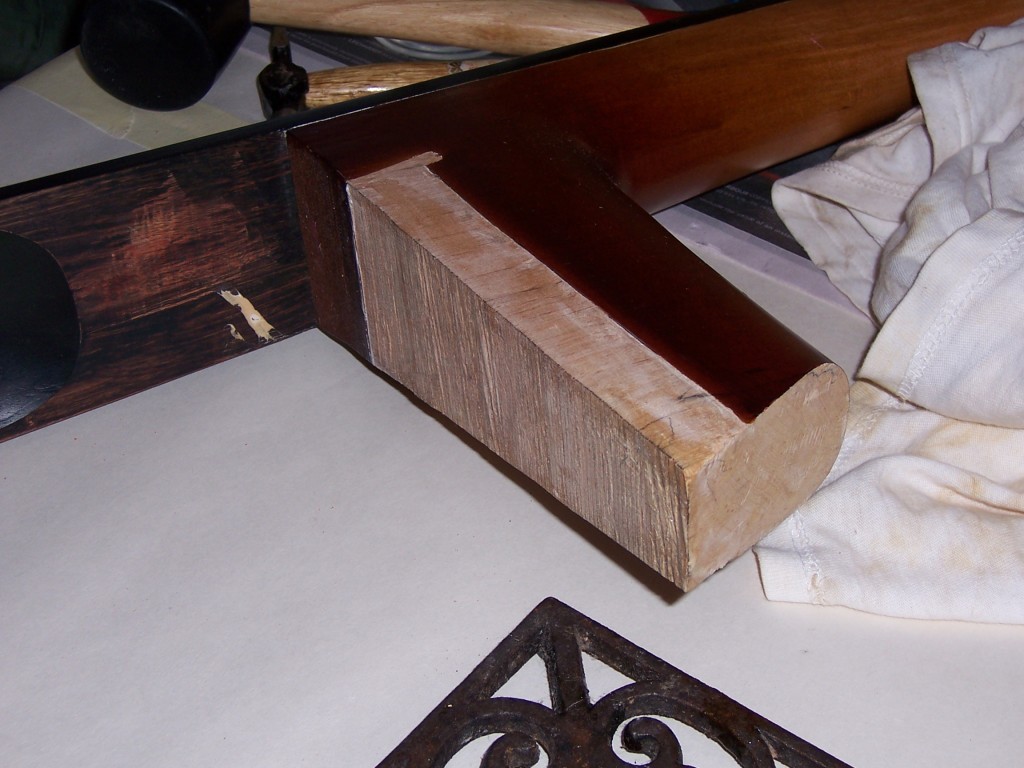
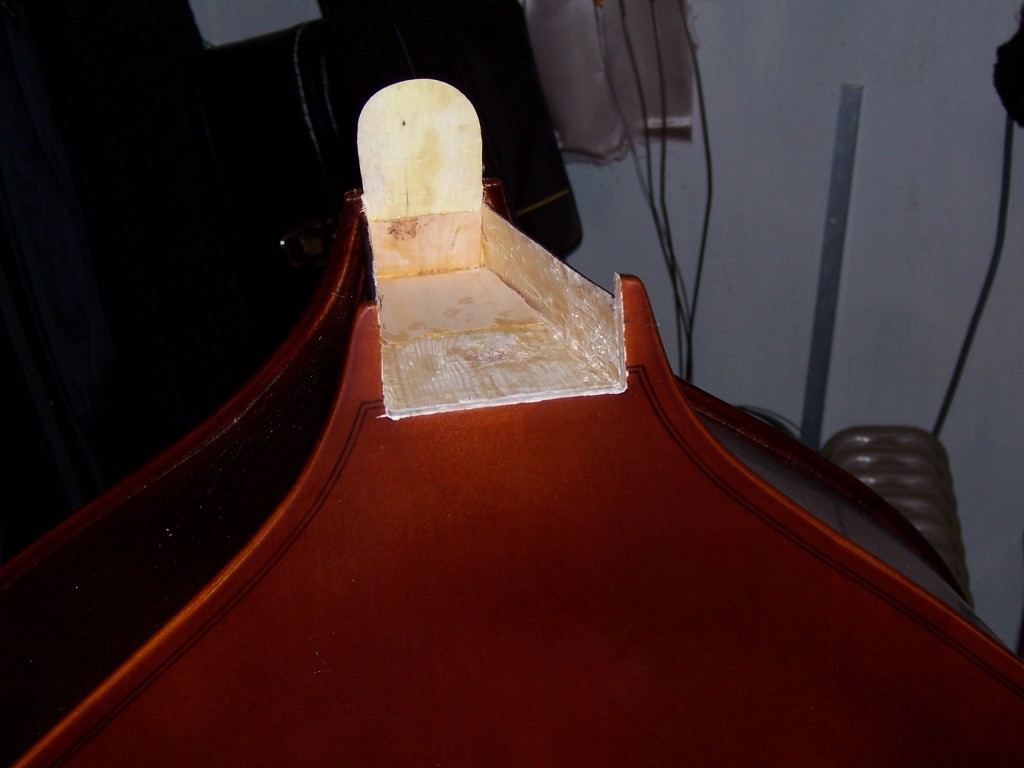

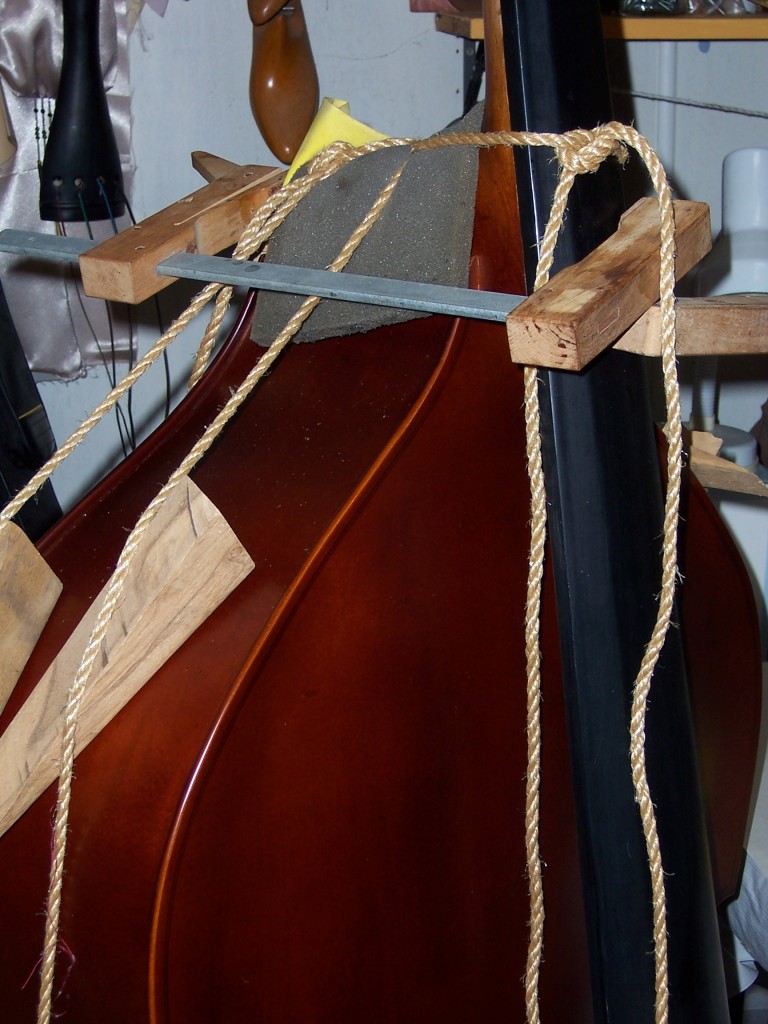
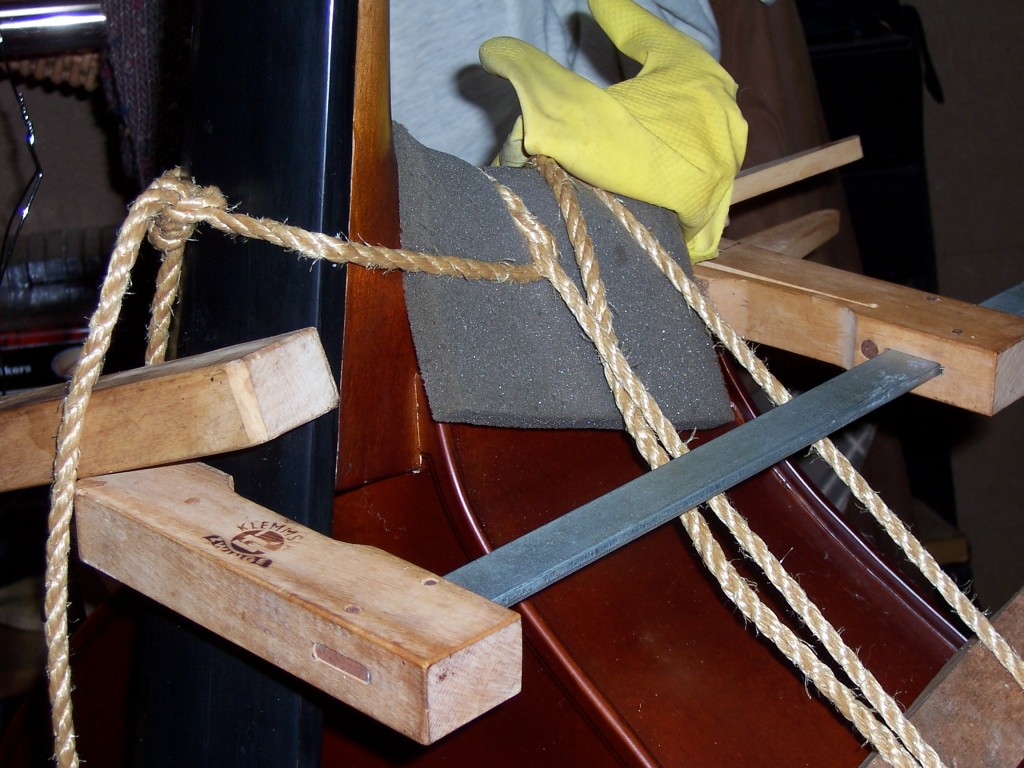
Just stumbled onto your projects. What great information for a private Luther just as myself. I’ve been privately playing for 40 years love wood guitars love upright bases this is great information thank you
HI – I have a bass with a neck construction very similar to the one in the photo. What glue did you use to reassemble it. does it have to be hide glue or will a gap filling glue like cascamite also be advisable? Thanks in advance for your advice.
Hello Chris
I strongly recommend hide glue. The reason for this is that if there is a problem, it is easy to deactivate hide glue, do any repairs and re-assemble. Hide glue is meant to come apart in certain circumstances. If you use another glue and there is a bump or knock to the bass, the glue remains stable and the bass wood splits. With hide glue this will most likely not happen.
If you don’t want to go through the whole glue preparation process (heating etc) you can get Titebond liquid hide glue. It has a longer assembly time, so take that into consideration.
Bass of Luck!
Thanks for your article. What I want to say is that while looking for a good website to read about your information I found you described it the best!
Wohh just what I was searching for, appreciate it for posting.